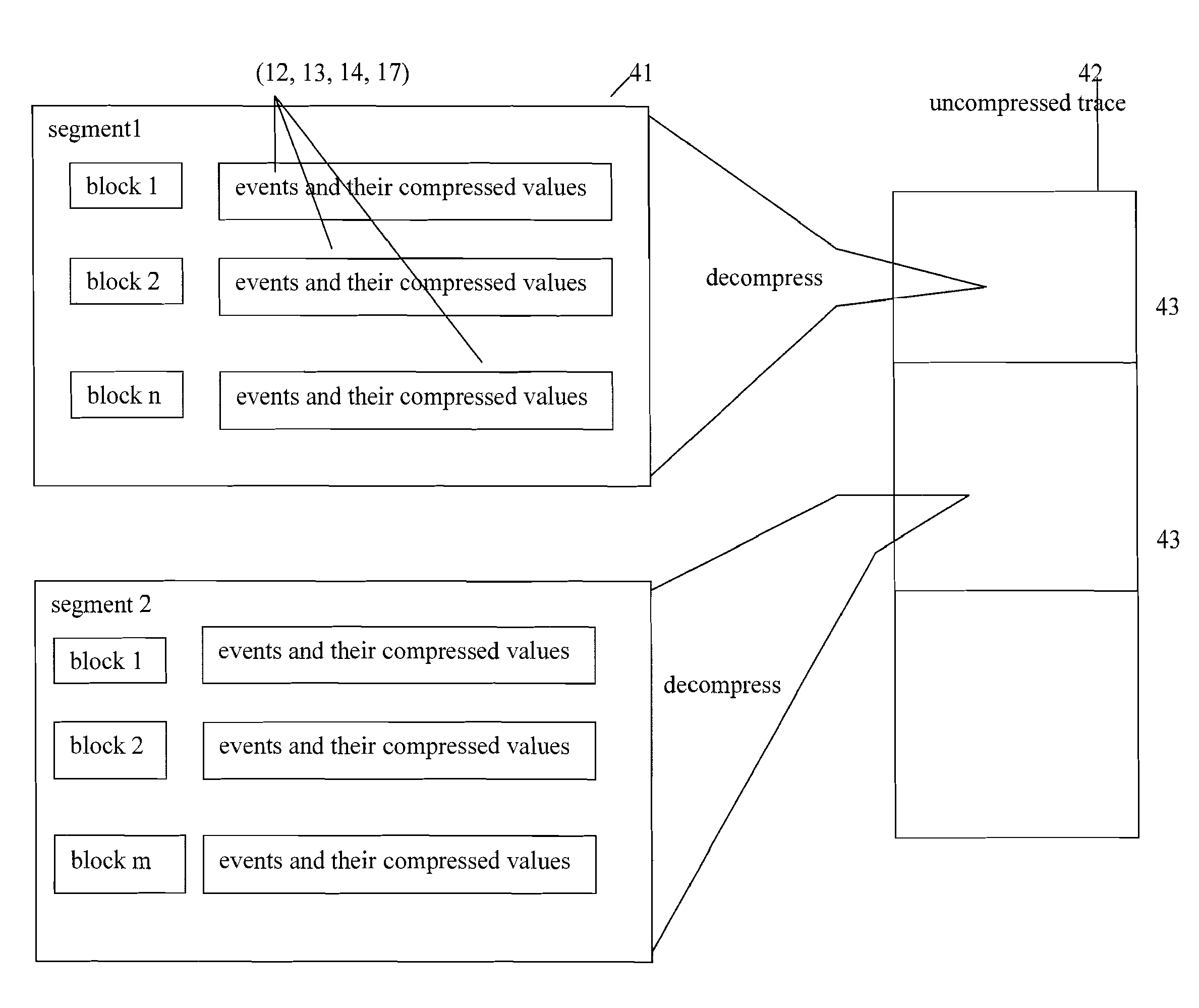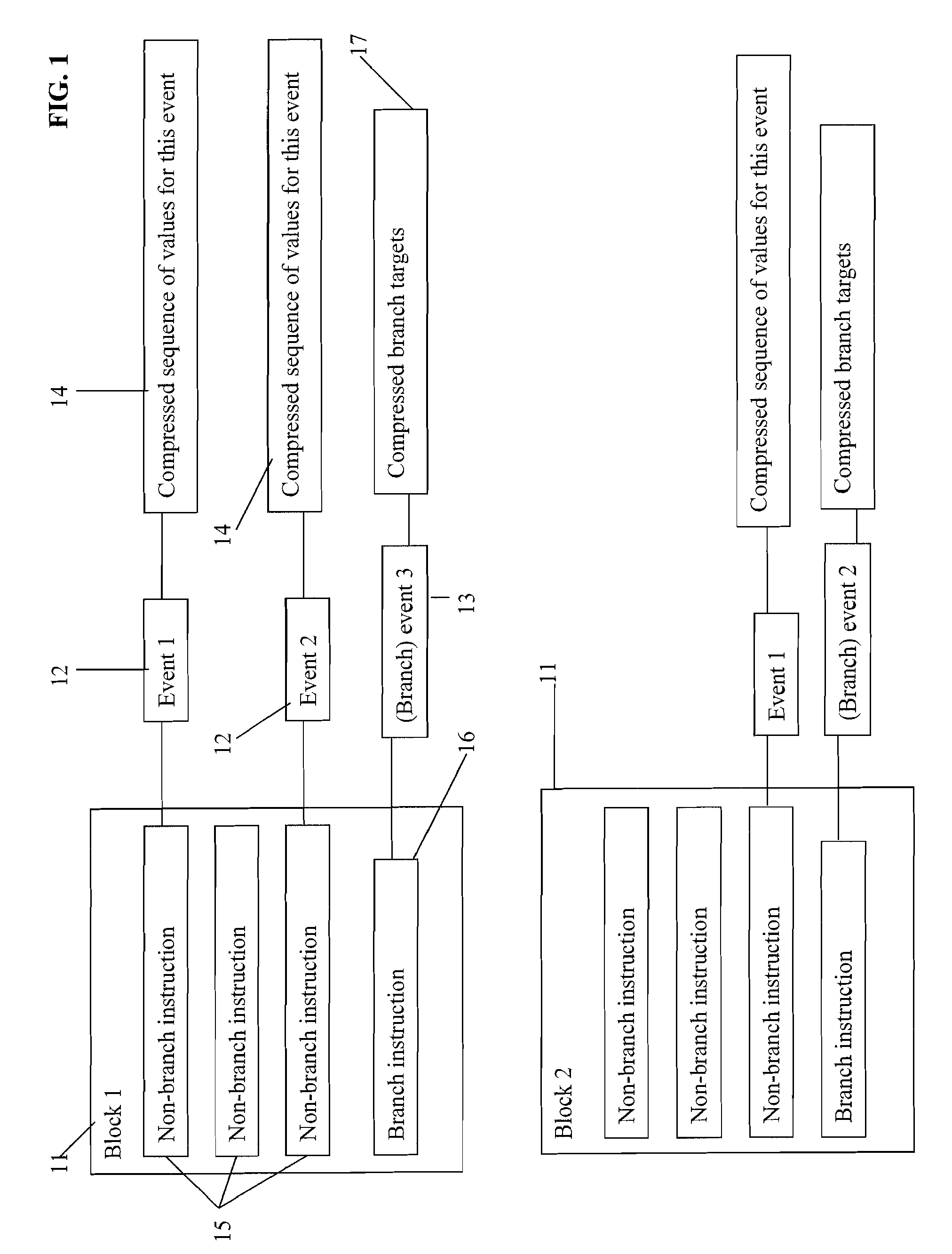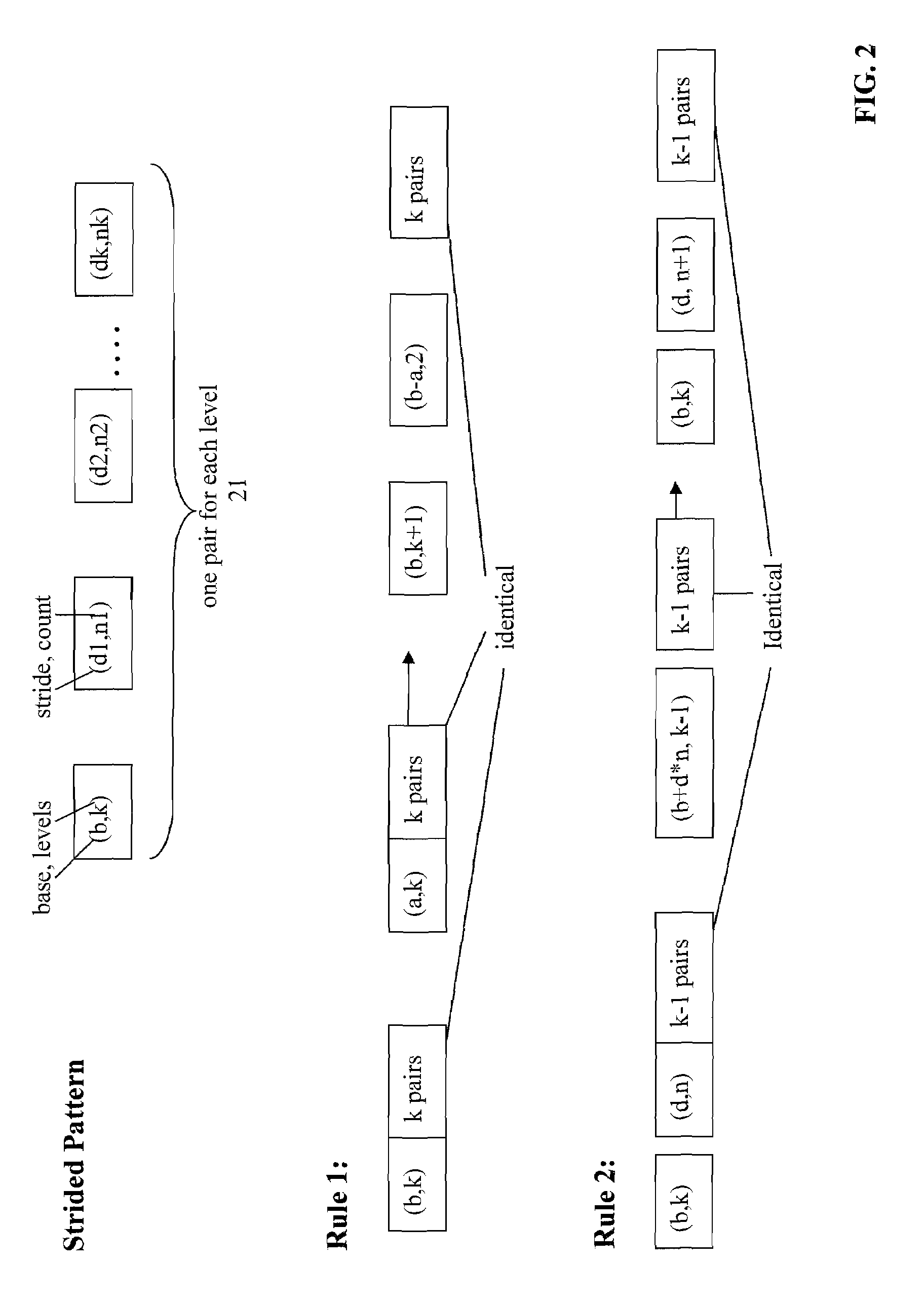Control flow based compression of execution traces
a control flow and execution trace technology, applied in the field of control flow based compression of execution trace, can solve the problems of fragmentation mechanism breakage, compressed trace often loses the flexibility to segment the trace, space problem further accentuated, etc., and achieve the effect of improving compression
- Summary
- Abstract
- Description
- Claims
- Application Information
AI Technical Summary
Benefits of technology
Problems solved by technology
Method used
Image
Examples
Embodiment Construction
Control Flow Representation
[0023]The binary code of a program can be statically decomposed into a sequence of blocks 11, where each block is a sequence of instructions 15 and 16 in program order, so that the last instruction in a block is always a branch 16, while all preceding instructions in the block are non-branch instructions 15. During execution, normally control enters at the beginning of a block, after which all subsequent instructions of that block are executed before control transfers to another block. Each block can be uniquely identified in a program. These blocks are used as the basic units in the control flow representation. Control flow is recorded by capturing the flow between blocks. At times, control may enter at an offset into a block. These situations can be handled by remembering the entry offset into a block.
[0024]Each block is associated with a sequence of events such as 12 or 13. Each event has a designated type and the type determines the length of the assoc...
PUM
 Login to View More
Login to View More Abstract
Description
Claims
Application Information
 Login to View More
Login to View More - R&D
- Intellectual Property
- Life Sciences
- Materials
- Tech Scout
- Unparalleled Data Quality
- Higher Quality Content
- 60% Fewer Hallucinations
Browse by: Latest US Patents, China's latest patents, Technical Efficacy Thesaurus, Application Domain, Technology Topic, Popular Technical Reports.
© 2025 PatSnap. All rights reserved.Legal|Privacy policy|Modern Slavery Act Transparency Statement|Sitemap|About US| Contact US: help@patsnap.com



